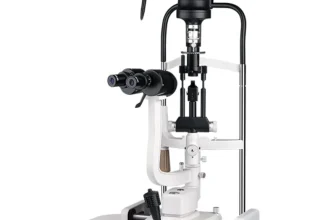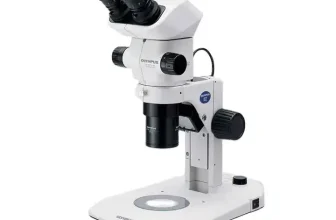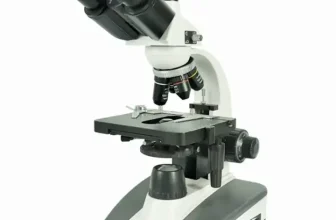The history of the microscope lamp, an essential component of the microscope, traces back to the early 16th century. Initially, studies using microscopes were entirely reliant on natural light. However, natural light was often diffused and insufficient for detailed microscopic investigations, hence the need for an alternative light source. By the 19th century, oil lamps were introduced and used to illuminate specimens under the microscope. These oil lamps offered a directed, consistent light source, albeit with limited control over the intensity and color of light.
As technology advanced, so too did the evolution of the microscope lamp. In the early 20th century, oil lamps were replaced by electric lamps. Incandescent halogen lamps became a standard feature in microscopes, providing brighter and more precisely controllable light. With the advent of LED technology in the late 20th and early 21st century, LED lamps have become a common fixture in modern microscopes because of their long lifespan, energy efficiency, and lower heat generation. Through the years, the advancement in microscope lamps has greatly contributed to the progress in scientific researches allowing for the detailed analysis of specimens.
Importance and uses of Microscope Lamp
Microscope lamps, also known as microscope illumination sources, are fundamental to science and research, playing a critical role in providing the clarity needed for meticulous examination of minute details. These vital components serve a rather transparent, albeit essential task – they light the path enabling researchers, scientists, and students to see the invisible, the hidden microcosms that exist beyond our natural eyesight’s capacity.
From scientific research and medicinal breakthroughs to educational laboratories, the microscope lamp’s illumination is crucial for detailed exploration. It enables the observation of bacteria and micro-organisms in biology, the inspection of soldered joints in electronics manufacturing, and the examination of samples in geology. Irrespective of the subject of inquiry, the lamp ensures proper visibility, intensity, and contrast, thus enabling precise results and conclusions. An invention that may seem simple, yet, its significance and applications are vast and profound.
What is a Microscope Lamp
Definition and functionality
A microscope lamp, often referred to as a microscope illumination or microscope light source, is a critical component of the microscope setup designed to illuminate the specimen being examined, enhancing visibility and resolution. The primary aim of a microscope lamp is to provide required, adjustable light to the object, facilitating detailed observation and examination. The light passes through the objective lens, enabling the viewer to see the sample clearly. Without the proper light source or illumination, microscopic investigation would be meaningless, as the sample being viewed would be dim or totally dark. Moreover, the functionality of a microscope lamp also extends to ensuring that the light is evenly dispersed on the sample, which aids in drawing out precise and accurate results from microscopic examinations. The ability to adjust the brightness of the light according to the specimen and user’s preference also falls under the functionality of the microscope lamp.
Components of a Microscope Lamp
A Microscope Lamp typically consists of several key components that ensure optimal functioning. The first integral part is the illumination source. This could be a halogen, LED, or fluorescent bulb, which produces the light necessary for viewing the microscopic entities.
The second key component is the collector lens that gathers light from the source and concentrates it onto a specific area. Then, we have the condenser lens, which focuses the light onto the sample to be examined.
In the setup, you would also find filters which adjust the quality of the light. They can alter the light’s intensity, contrast, and color depending on the requirements of the examination.
Lastly, an important part of the Microscope Lamp setup is the diaphragm or iris. Functioning similarly to the aperture of a camera, it allows the regulation of the light’s amount reaching the specimen, offering a balance between resolution and contrast.
Understanding these components can be essential in utilizing a Microscope Lamp effectively and achieving the desired results in observations and examinations.
Types of Microscope Lamps
Halogen Lamps
Halogen lamps, also known as incandescent lamps, have been commonly used in microscopy for several decades. These type of lamps incorporate a tungsten filament encased in a quartz envelope that contains halogen gas. The gas works in harmony with the tungsten filament to produce light, creating a continuous spectrum of light adequate for viewing most types of specimens.
The halogen lamps have a relatively high color temperature range of 3200 to 3400 Kelvin, making them ideal for applications that require higher resolution and contrast in the sample viewing. Another advantage is that they have a reliable color rendering index, which ensures that the observed color of the specimen is consistent and accurate.
One of the drawbacks of halogen lamps in the context of microscopy is their relatively short lifespan, usually about 1000 to 2000 hours. Further, they tend to produce significant heat during operation, which can influence the temperature of the specimen being examined, possibly causing alterations or damage.
LED Lamps
Light Emitting Diode (LED) lamps are increasingly becoming prominent in the world of microscopy. They are solid-state devices that generate light through the movement of electrons within the semiconductor material. Differing from other lamp types, LED lamps do not have a filament that can burn out, making them highly durable and long-lasting.
These lamps are favored for their incredibly high intensity, uniform light distribution and low heat production. They provide a cool light source, thereby preserving the integrity of heat-sensitive specimens. LED lamps also benefit from retaining brightness settings between uses, providing consistency for repetitive observations.
Furthermore, they offer certain advantages in terms of their environmental impact. LED lamps don’t contain mercury or other potentially harmful substances, which makes them a safer choice in office or classroom settings. Another appealing feature is their energy efficiency. They consume less power and provide a similar, if not better, level of luminosity compared to other lamp types.
Their small size and low voltage requirements make LEDs ideal for portable, battery-operated microscopes. Their ability to flicker on and off without degradation also provides opportunities for advanced applications, such as fluorescence microscopy. Despite their somewhat higher initial cost, their long lifespan and low power consumption eventually make them a cost-effective choice.
Fluorescent Lamps
Fluorescent lamps are another widely used type of microscope lamp, particularly popular for their longer life span and lower heat output compared to halogen bulbs. This means that they can be used for long periods without the risk of the slide or specimen getting overheated, ensuring the subject’s integrity is maintained.
Fluorescent lamps mainly use mercury vapor inside the bulb, which emits UV light when electrified. This UV light is then converted into visible light by the bulb’s fluorescent coating. Fluorescent lamps for microscopes are typically ring-shaped, providing an amount of light sufficient for viewing the most intricate details on the slide.
Despite offering lower light intensity than halogen and LED lamps, fluorescent lamps are commonly used in applications like fluorescence microscopy, where the lamp excites the fluorescent dyes or tags on a specimen. This approach makes them an integral part of certain branches of medical and biological research.
However, fluorescent lamps are not without their drawbacks. Although they are cooler and more energy-efficient than halogen bulbs, they still don’t stack up to LEDs in these regards. Furthermore, the color quality and intensity of the light they produce might degrade over time, requiring the bulb to be replaced even if it hasn’t burnt out.
Factors to Consider When Choosing a Microscope Lamp
Length of Time for Use
Consideration of the duration for which the microscope will be used is an essential factor in selecting a microscope lamp. Different types of lamps have varying lifespans and perform optimally over different lengths of usage. For instance, if you expect to use your microscope for long, uninterrupted periods, a lamp that can withstand extensive usage without considerable degradation in performance would be ideal. Also, the lamp’s capacity to maintain a consistent brightness level throughout its lifespan and use duration should be evaluated. A lamp that can provide consistent, high-quality light for the anticipated period of regular use offers more reliability and can significantly enhance the viewing experience.
Intensity Adjustment
Intensity adjustment is crucial in microscope lamps as it allows you to control the amount of light that illuminates your sample. Consequently, this feature significantly affects the visibility and clarity of the specimen being examined. Hence, when choosing a microscope lamp, it’s important to opt for one with an easy-to-use and reliable intensity adjustment feature.
For the best results, the microscope lamp should offer a broad range of light intensities – from very dim to extremely bright. This way, you can select the ideal light intensity depending on your specific needs, the type of specimen, and the microscope’s magnifying power.
Moreover, consider a microscope lamp with a smooth intensity adjustment mechanism to ensure gradual and precise alterations to the light level. Sudden or drastic changes in light intensity can ruin the visibility of a carefully prepared sample and may even damage a user’s eyesight.
Color Temperature
Color temperature is a crucial aspect to consider when selecting a microscope lamp. It refers to the warmth or coolness of the light produced, usually measured in Kelvin (K). A lower Kelvin value signifies a warmer, more yellow light, while a higher Kelvin value indicates a cooler, more blue light.
It’s essential to match the color temperature of your microscope lamp to your application. For instance, biological applications such as viewing live cells may require a warmer, softer light which is less harmful to the specimens. On the other hand, material science applications or intricate detailing tasks may need cooler, whiter light to increase visibility and contrast. Furthermore, it’s worth considering a lamp with an adjustable color temperature, as it provides flexibility for a range of uses.
Longevity
Longevity is an essential factor to consider when choosing a microscope lamp. Microscopes are often used for extended periods, thus requiring a durable lamp that can withstand continuous usage without a decrease in performance or ultimate failure. The longevity of the lamp is greatly dependent on its type. For instance, LED lamps are known for their long lifespan, often lasting for tens of thousands of hours. On the other hand, halogen lamps tend to have a shorter lifespan. Therefore, it is imperative to consider the expected lifespan of the lamp based on its type when making a choice. Moreover, a lamp’s longevity can also be influenced by proper handling and maintenance, which can effectively extend its usable life.
Advantages of Using a Microscope lamp
Clear imaging
The fundamental advantage of using a microscope lamp is the attainment of clear imaging. Regardless of the microscopic exploration being conducted, clear and visible illumination of the specimen under investigation is critical for achieving accurate results. The use of a microscope lamp aids in focusing light directly onto the specimen, providing high-quality images that make even the most intricate details clearly visible. When the specimen is adequately illuminated, it becomes easier for the observer to detect and characterize minute features that would otherwise be difficult to observe. This attribute of microscope lamps renders them indispensable in any microscopic investigation. Proper illumination can enhance the distinction between different elements of the sample, thus, enabling the observer to differentiate them effectively. These enhanced visuals allow for accurate data interpretation, solidifying the role of microscope lamps in scientific research and discovery.
Enhances details
Microscope lamps play a crucial role in enhancing details of the specimen being observed. With the right illumination, a microscope lamp allows for the revelation of intricate details that are typically invisible to the naked eye. It can reveal the elements of the sample that reflect light differently, thus, highlighting the contrasts and bringing out the smallest details of the specimen with a better resolution. Moreover, sophisticated microscope lamps can accommodate a range of wavelengths, allowing for better examination of different structural components of a specimen. By adjusting the brightness and focus, scientists can control the lighting according to the needs of their observation, achieving optimal clarity. This functionality is vital in fields that demand extensive precision such as cellular biology, materials science and so forth.
Flexible lighting control
Flexible lighting control is one of the key advantages of using a microscope lamp. This element allows users to adjust the light source, illuminating the specimen to bring out optimal contrast and visibility. High-quality microscope lamps often offer customizable settings to control intensity and direction, thereby enhancing the ability to view fine details. For researchers and scientists, the freedom to manipulate light conditions can yield more accurate results, as different specimens require varying degrees of illumination. Thus, microscope lamps with flexible lighting control are critical in fields such as biology, forensics, and geology, enabling precise tuning of light to suit the user’s needs and the nature of the task at hand. Whether one is observing transparent specimens or performing complex microscopic surgery, flexible lighting control can greatly impact the ease and effectiveness of the work.
Innovations and Technological advancements in Microscope Lamps
Improved Longevity
Microscope lamps have seen significant improvements in their longevity due to technological advancements. Traditionally, halogen bulbs were popular for their bright and clear light. However, their lifespan left much to be desired, usually burning out after 100 to 200 hours of use. The advent of LED technology has revolutionized the scene significantly. LED lamps, while maintaining high light quality, superbly outlast their halogen counterparts, boasting an incredible lifespan of 10,000 to 100,000 hours of use. This dramatic increase in longevity reduces the frequency of bulb replacements, making LED lamps far more convenient and cost-effective over time. Furthermore, advancements are not just limited to LED. Fluorescent lamps, too, have seen an increase in lifespan, with modern, high-quality bulbs lasting from 6,000 to 15,000 hours. These advancements demonstrate the industry’s commitment to significantly improving the longevity of microscope lamps, a trend expected to continue in the future.
Energy Efficiency
Microscope lamp technology has taken significant strides in terms of energy efficiency. The advent of LED microscope lamps marked a significant shift in the field. These lamps use a fraction of the power consumed by their traditional halogen counterparts, yet they deliver bright and clear images without compromising on performance. This reduction in energy consumption translates to significant cost savings over time, making them an increasingly popular choice among scientific and medical research communities.
Moreover, the latest generation of microscope lamps has controls that enable users to adjust the intensity of the light emitted. This feature not only helps save energy by using only the necessary amount of light but also extends the lamp’s lifespan. Furthermore, these advancements have also been designed to help maintain cooler operating temperatures, which not only conserves energy but also ensures that sensitive samples under examination aren’t damaged due to heat.
Advancements have not only focused on the light sources themselves but also the accompanying components. For instance, power supply units have been re-engineered with the advancements in circuit design technology to provide more efficient energy conversion, further reducing overall power consumption.
In essence, the trend towards energy-efficiency has become an integral part of new designs and innovations in microscope lamps, responding to the global movement towards environmentally friendly options and sustainability.
Environmentally Friendly Options
The ongoing widespread recognition of the environmental crisis has propelled the production of more eco-friendly versions of various technological gadgets, and microscope lamps are not an exception. Researchers and developers have been working ardently to create sustainable and efficient microscope lamps that will not merely align with the global goal of reducing carbon footprint, but also exceed the performance of traditional lamps.
One significant breakthrough in this endeavor is the transition from high energy-consuming illumination options like the halogen lamps, to LED lamps. LED, or Light-emitting diodes, are notable for their energy-efficiency. They consume less power and subsequently emit less carbon dioxide compared to their halogen counterparts. This attribute considerably reduces environmental degradation and also decreases costs associated with energy consumption.
Not only do they have lower environmental impact but LEDs also last longer, minimizing the need for constant replacements and reducing waste generation. Moreover, researchers are innovating by using renewable energy sources such as solar and wind energy to power these lamps, further accentuating their environmentally friendly trait.
Attention is also being directed towards manufacturing materials. Companies are looking into recyclable materials for the lamp production process. This helps to reduce the waste generated right from the inception of the microscope lamp’s lifecycle.
These advancements are a prime example of how technological innovation can go hand-in-hand with environmental conservation, creating brighter prospects for both microscopy and our planet.
How to Maintain a Microscope Lamp
Proper Handling
Proper handling is essential when maintaining a microscope lamp to ensure its longevity and optimal performance. The lamp, particularly the bulb, is often delicate and sensitive to external factors and mishandling.
Firstly, when using the microscope lamp, one must ensure their hands are clean and dry to prevent leaving any residues that may cause harm. Hands should also be steady to avoid any drops or accidental hits that may damage the lamp or its intricate parts.
Secondly, while changing the bulb, it is advisable to handle it with a piece of clean cloth or tissue. This is because the oils in the skin can create hot spots on the lamp surface when heated, damaging or decreasing the lamp’s lifespan.
Lastly, avoid touching the lamp, particularly the bulb, when it’s switched on or has just been turned off. The lamp can get very hot and could cause burns. It could also easily shatter if struck because the hot glass is much more fragile. Proper handling of a microscope lamp ensures the safety of the user and the durability of the lamp itself.
Cleaning
Keeping your microscope lamp clean is an integral part of its maintenance. Accumulated dust can negatively affect the quality of light projected by the lamp, obscuring the details of your specimen under observation. How should you clean your microscope lamp? First, ensure the lamp and the microscope are both turned off and unplugged. This is crucial for safety reasons as handling electrical appliances without switching them off can lead to potential electrical hazards.
It’s also important to let the lamp cool down before cleaning, since microscope lamps, particularly the halogen types, can become extremely hot. Cleaning a hot lamp may burn your hands or even cause the lamp to shatter, causing injury. Additionally, if the lamp is not allowed to cool down, any cleaning liquid applied directly to the hot bulb could evaporate instantly, potentially leaving smudges and uneven cleaning.
Using a microfiber cloth or lens paper, gently clean the bulb area, taking care not to apply too much pressure or abrasion that may scratch, damage or rupture the bulb. For stubborn dirt, you might consider using a little bit of isopropyl alcohol or a specific lamp cleaning solution. Remember to avoid getting liquids on the electrical connections or base of the bulb, as it could lead to short circuits when electricity is applied.
Finally, remember to have clean, dry hands when replacing the bulb after cleaning. This is to prevent transferring oils or other material from your hands onto the bulb which could impact its performance or create a potential fire hazard. In all the cleaning process, handle your microscope lamp with care as they are often delicate and fragile. Regular cleaning can extend its life span and ensure you get the best lighting for your microscope-based observations and experiments.
Replacement of Parts
Ensuring your microscope lamp has an optimal lifespan isn’t complete without mentioning the process of part replacement. Like many other tools, certain parts of the microscope lamp may wear out over time and need to be replaced. The lamp bulb itself is the component that often requires replacement. When this happens, it is essential to follow manufacturer’s instructions carefully to avoid causing further damage.
Make sure that the lamp has cooled sufficiently before attempting to replace the bulb as it can become extremely hot during use. Also, wearing gloves is highly recommended while handling new bulbs to prevent the oil from our skin, which can shorten the life of the bulb, from making contact with its surface.
In some microscope lamp models, there could be other replaceable parts such as fuses or the whole lamp socket. Be sure to always check with the unit’s manual or with the manufacturer’s customer service for the best practices when it comes to part replacement. Regular replacement of worn-out parts not only ensures the longevity of your microscope lamp but also improves its performance and reliability.
Conclusion
Summary of the relevance of Microscope Lamp
Microscope lamps are an essential tool that significantly contribute to the effectiveness of microscopy. They provide illumination that is crucial for bringing out the details when viewing specimens, resulting in clearer and more detailed images. Whether you’re a student embarking on a journey of scientific discovery, a healthcare professional diagnosing diseases, or a researcher unlocking new knowledge, the presence of a well-functioning microscope lamp can greatly enhance the results of your work. They have evolved over time, embracing technology to improve longevity, offer better energy efficiency, and introduce environmentally friendly options. This tool, though simple, serves as the backbone in many scientific processes. As we move into the future, we can expect further advancements in microscope lamp technology, continuing to light up the path of discovery.
Future prediction in the field of Microscope Lamps
As technology continues to advance rapidly, it is predicted that microscope lamps will equally evolve with innovative changes. The future might see an increasing trend towards more energy-efficient and environmentally friendly lighting options, reducing the ecological footprint of scientific exploration.
We also expect to see advances in lamp longevity, reducing the frequency of bulb changes and minimizing disruptions during critical scientific research. In the era of smart devices, there are also expectations of ‘smart’ microscope lamps, equipped with automated adjustments for light intensity, color temperature, and focus, all aimed at achieving the highest image quality possible.
Finally, with the increasing importance of miniaturization in technology, the future may also hold ultra-compact microscope lamps, enabling the construction of even smaller and more portable microscope setups. This is a promising prospect for field researchers, medical professionals, and others who rely on mobile solutions.
In the end, the evolution of microscope lamps will undoubtedly play a vital role in our pursuit of scientific discovery, ultimately illuminating our understanding of the minuscule marvels that surround us.







